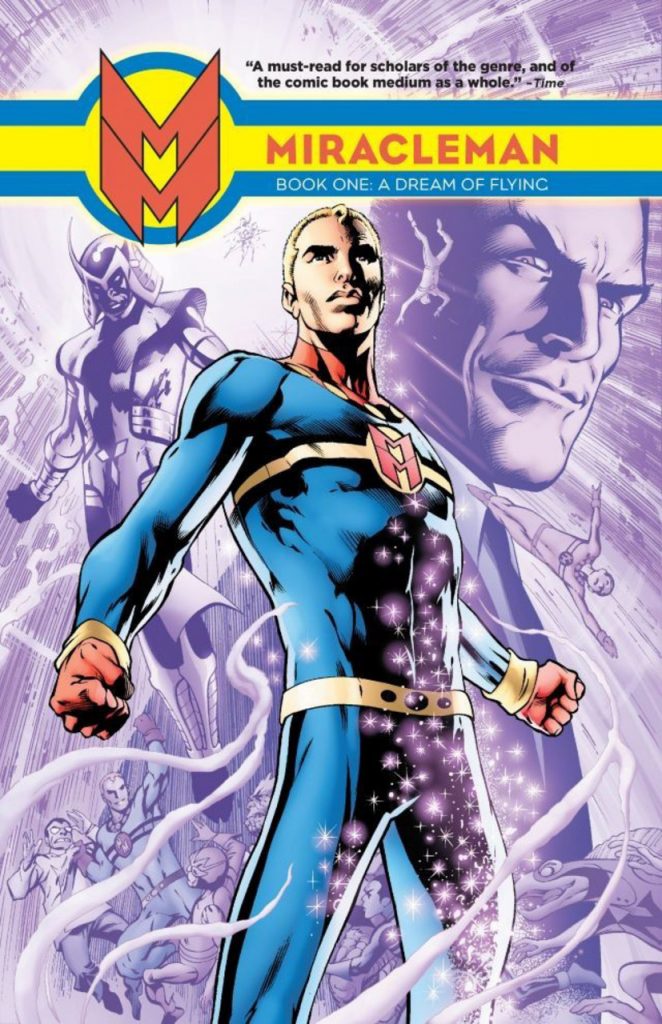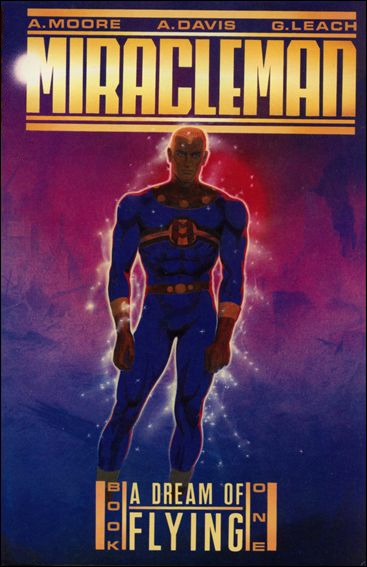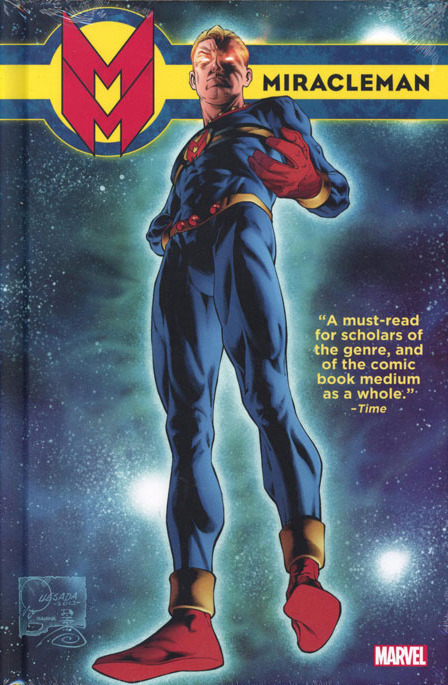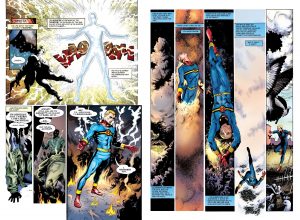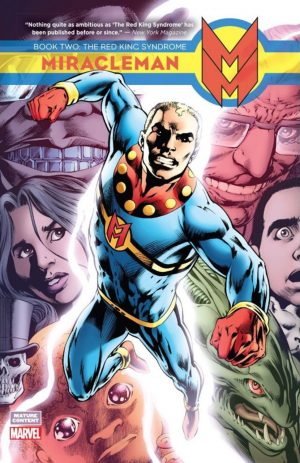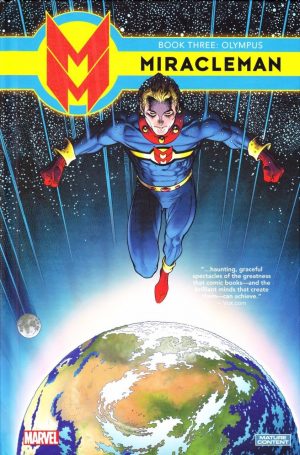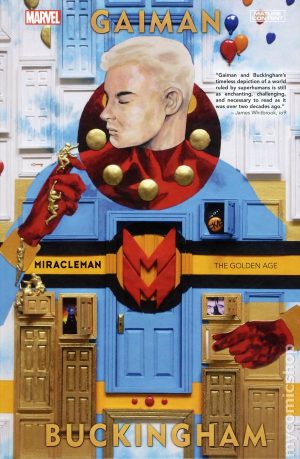Review by Frank Plowright
Is there a more influential superhero graphic novel than A Dream of Flying? The original 1980s British serialisation picked up a widespread audience among American comics professionals, and they saw their methods of superhero presentation being completely deconstructed. So much of what Alan Moore generated over the course of three graphic novels has been assimilated and distilled in subsequent superhero revisions, so will looking back on a pioneering work reveal tired ideas?
Miracleman was compromised from the start. The British publishers of Captain Marvel stories lost the rights in the 1950s, so ripped off the basic premise wholesale. British kid Micky Moran only had to utter the word “Kimota” to be transformed into Marvelman, the world’s mightiest mortal with all the super powers he needs. Later copyright complications led to a second re-naming.
A Dream of Flying opens with Mick Anglo’s introductory strip delivering the dated flavour of Miracleman as he was in the 1950s, drawn by Don Lawrence, with additional dialogue by Moore to segue into his revision. We’re then introduced to ailing and unsuccessful middle-aged journalist Mike Moran who’s tormented by dreams he can’t explain, dreams of flying.
For reasons of personal integrity you can source online, Moore has chosen to be credited as “the original writer” rather than under his own name, but under any name the list of achievements here is immense. Because he thought about superheroes rather than just wheeling in the next villain, Moore’s work still crackles with transformational energy even before consideration of his innovations. Creating verbal transitions so the final line of one scene reflects on the next may not have been his innovation, but his use remains impressive and he was the writer who brought it to comics. There’s in-strip commentary about how ridiculous the earlier adventures sound, and the method of dealing with that was to ascribe them all to fiction, as artificially induced distractions. Then why had Miracleman not been seen since the 1950s? Reconfiguration applies here also, a process beyond merely tinkering with continuity. Then there’s the realism. Some aspects are standard settings, but certainly new to comics was a nicely depicted loving relationship between two people in middle age, and then the exploration of what a human would do with God-like powers and no controls.
To discount artists Garry Leach and Alan Davis is plain negligent. While not as complex as some of Moore’s later work, for maximum effect Miracleman required artists able to contrast Mike Moran with the God he becomes beyond the musclebound posing of standard superhero transformations and to present the effects of a superhero battle more extensively than usual. The pain, horror and devastation is shockingly drawn, all the more remarkable for being prepared as black and white art, yet taking Steve Oliff’s colour very well.
Miracleman may have been strip-mined by others over the years, but Moore’s such an original it still reads remarkably well. Some description is now florid, his parody superhero Big Ben is overbaked, and the Warpsmiths’ dialogue may be suitably alien, but tries the patience. Yet this is still fresh compared to many other highly rated superhero adventures of the 1980s. It’s brimming over with ideas in passing, and even more emerge in The Red King Syndrome.
It should be noted that the main story alone is five star material, but is dragged down slightly by the additional strips. If a visionary story isn’t enough to sell the collection, there’s plenty of back-up material. Moore and Leach’s connected Warpsmith stories, page after page of Leach’s preparatory work, loads of covers…
